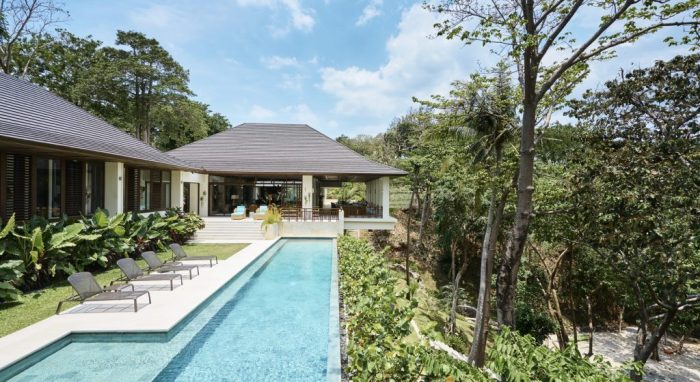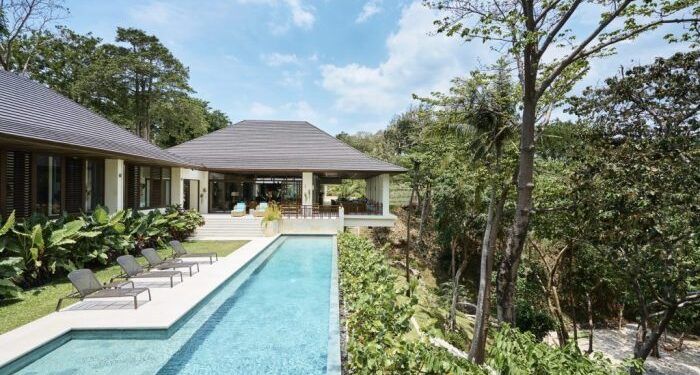Exploring the intricate relationship between culture, design, and sustainability in global housing projects, this article delves into the fascinating world of cross-cultural design features. By examining how different cultural backgrounds shape architectural choices and layout designs, readers will gain a deeper understanding of the importance of integrating diverse cultural elements in housing projects around the world.
As we navigate through the various aspects of cross-cultural design in housing projects, we will uncover the innovative ways in which technology and tradition intersect to create sustainable and culturally sensitive living spaces.
Cultural Influence on Design
Cultural factors play a significant role in shaping the design choices of global housing projects. The unique traditions, beliefs, and lifestyles of different cultures often influence the architectural features and layouts of homes, creating diverse and culturally rich living spaces.
Examples of Cultural Impact on Architectural Features
- In Japan, traditional homes like the tatami-mat houses reflect the importance of harmony with nature, featuring sliding doors and minimalistic design elements.
- In the Middle East, homes are designed to provide privacy and protection from the harsh desert climate, with inner courtyards and high walls.
- In Scandinavia, the concept of hygge is reflected in cozy, functional designs with natural materials and plenty of natural light.
How Cultural Practices Shape Layout and Functionality
Cultural practices can deeply influence the layout and functionality of housing designs. For example, in cultures where extended families live together, homes may have interconnected living spaces to promote social interactions. In contrast, cultures that value individual privacy may have separate living quarters or private spaces within the home.
Additionally, cultural preferences for certain activities, such as cooking or communal gatherings, can impact the design of kitchens, dining areas, and gathering spaces within a home.
Cross-Cultural Design Elements

When it comes to housing projects that cater to multiple cultural backgrounds, there are common design elements that can be found to create a sense of inclusivity and appeal to a diverse range of preferences.
Common Elements in Cross-Cultural Design
In global housing projects, some common elements that cater to multiple cultural backgrounds include:
- Flexible Spaces: Designing spaces that can be adapted to different uses based on cultural practices or preferences.
- Natural Light and Ventilation: Incorporating features that align with cultural beliefs about the importance of natural elements in living spaces.
- Integration of Local Materials: Using materials that are locally sourced and hold cultural significance to create a sense of connection to the environment.
- Symbolism and Artwork: Including symbols, patterns, or artwork that reflect diverse cultural traditions and beliefs.
Comparing and Contrasting Design Features
Design features that appeal to a diverse range of cultural preferences may vary in terms of aesthetics, functionality, and symbolism. While some cultures may prefer vibrant colors and intricate patterns, others may lean towards minimalistic designs with neutral tones. By understanding these differences, architects and designers can create spaces that resonate with a wide audience.
Significance of Cross-Cultural Design Elements
The incorporation of cross-cultural design elements in global housing projects is significant as it promotes inclusivity, celebrates diversity, and fosters a sense of belonging among residents from different cultural backgrounds. It also helps in creating harmonious living environments that respect and honor various traditions, ultimately contributing to a more cohesive and culturally rich society.
Sustainability and Cultural Sensitivity
In global housing projects, it is crucial to integrate sustainability practices while also respecting cultural values. This ensures that the design solutions implemented are not only eco-friendly but also align with the traditions and beliefs of the community they serve.
Integration of Sustainability and Cultural Values
When incorporating sustainability into housing designs, it is essential to consider the cultural context in which the project is located. For example, in areas where water scarcity is a significant issue, implementing rainwater harvesting systems may be a sustainable solution that also resonates with the cultural value of resource conservation.
By integrating such eco-friendly design elements that are rooted in cultural traditions, the housing project can effectively meet the needs of the community while respecting their values.
Examples of Eco-Friendly Design Solutions
- Utilizing locally-sourced and renewable materials for construction to reduce the environmental impact and support the local economy.
- Designing energy-efficient homes that incorporate passive solar heating and natural ventilation techniques, inspired by traditional architectural styles.
- Implementing community gardens or green spaces within the housing project to promote sustainable living practices and reconnect residents with nature.
Balancing Sustainability with Cultural Sensitivity
It is important to strike a balance between sustainability and cultural sensitivity in cross-cultural housing projects. While eco-friendly design solutions are essential for reducing the carbon footprint of a project, they must also be implemented in a way that respects and honors the cultural heritage of the community.
This involves engaging with local stakeholders, understanding their values and traditions, and co-creating design solutions that are both sustainable and culturally sensitive.
Technology and Innovation in Cross-Cultural Design

In the realm of cross-cultural design in global housing projects, technology and innovation play a crucial role in shaping the integration of diverse cultural elements. These advancements not only facilitate the inclusion of various cultural features but also serve as a bridge to connect different design philosophies and traditions.
Impact of Technology on Cross-Cultural Design Integration
With the advancements in digital tools and software, architects and designers can easily collaborate across borders to incorporate unique cultural elements into housing projects. Virtual reality and augmented reality technologies enable stakeholders to visualize and experience design concepts, ensuring that cultural nuances are accurately captured and integrated.
Role of Innovation in Bridging Cultural Gaps
Innovative construction techniques and materials allow for the implementation of traditional design elements from different cultures in contemporary housing developments. For example, eco-friendly building materials inspired by indigenous practices can be used to create sustainable and culturally sensitive structures that resonate with local communities.
Preservation of Traditional Cultural Elements through Technology
Technology also plays a significant role in preserving traditional cultural elements in modern housing projects. Through digital documentation and preservation techniques, historical architectural styles and design motifs can be safeguarded for future generations. Additionally, digital archives and databases ensure that traditional building methods and cultural references are not lost in the face of rapid urbanization and globalization.
Last Point
In conclusion, the harmonious blend of cultural influences, sustainable practices, and technological advancements in global housing projects highlights the significance of embracing diversity and inclusivity in design. By prioritizing cross-cultural design elements, we pave the way for a more interconnected and culturally rich architectural landscape that celebrates the uniqueness of each community.
FAQ Corner
How do cultural factors influence design choices in global housing projects?
Cultural factors such as traditions, beliefs, and social norms play a significant role in shaping design choices by influencing everything from materials used to layout designs.
What are some examples of how different cultures impact the architectural features of homes?
For example, Asian cultures may prioritize open spaces and natural elements in their designs, while European cultures may focus on intricate details and historical influences.
Why is it important to balance sustainability with cultural sensitivity in cross-cultural housing projects?
Balancing sustainability with cultural sensitivity ensures that design solutions are not only environmentally friendly but also respectful of cultural traditions and values.




